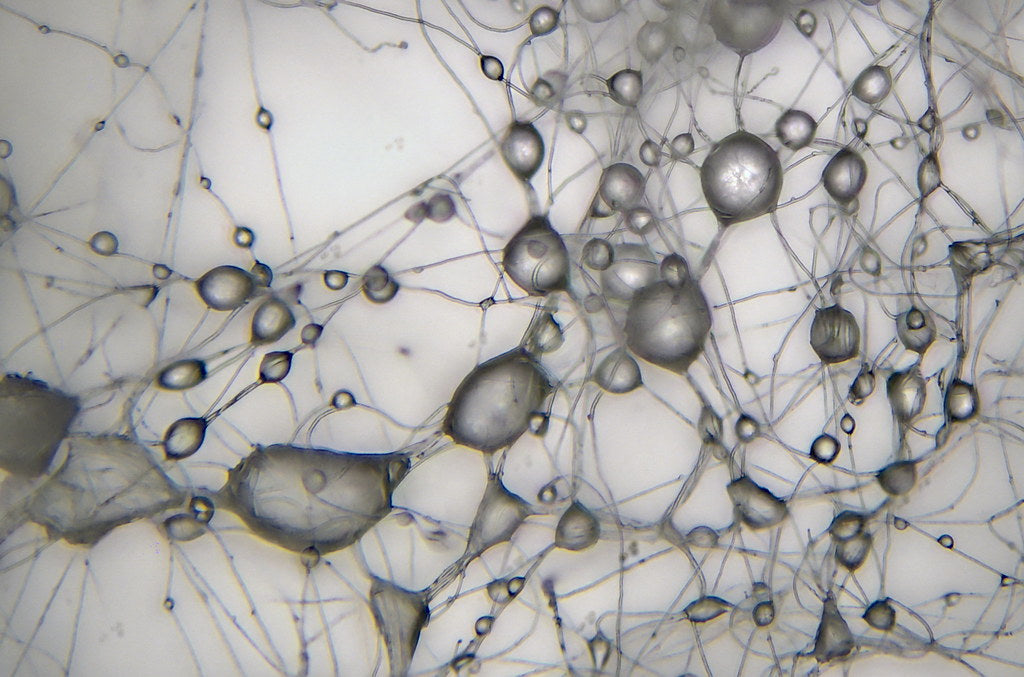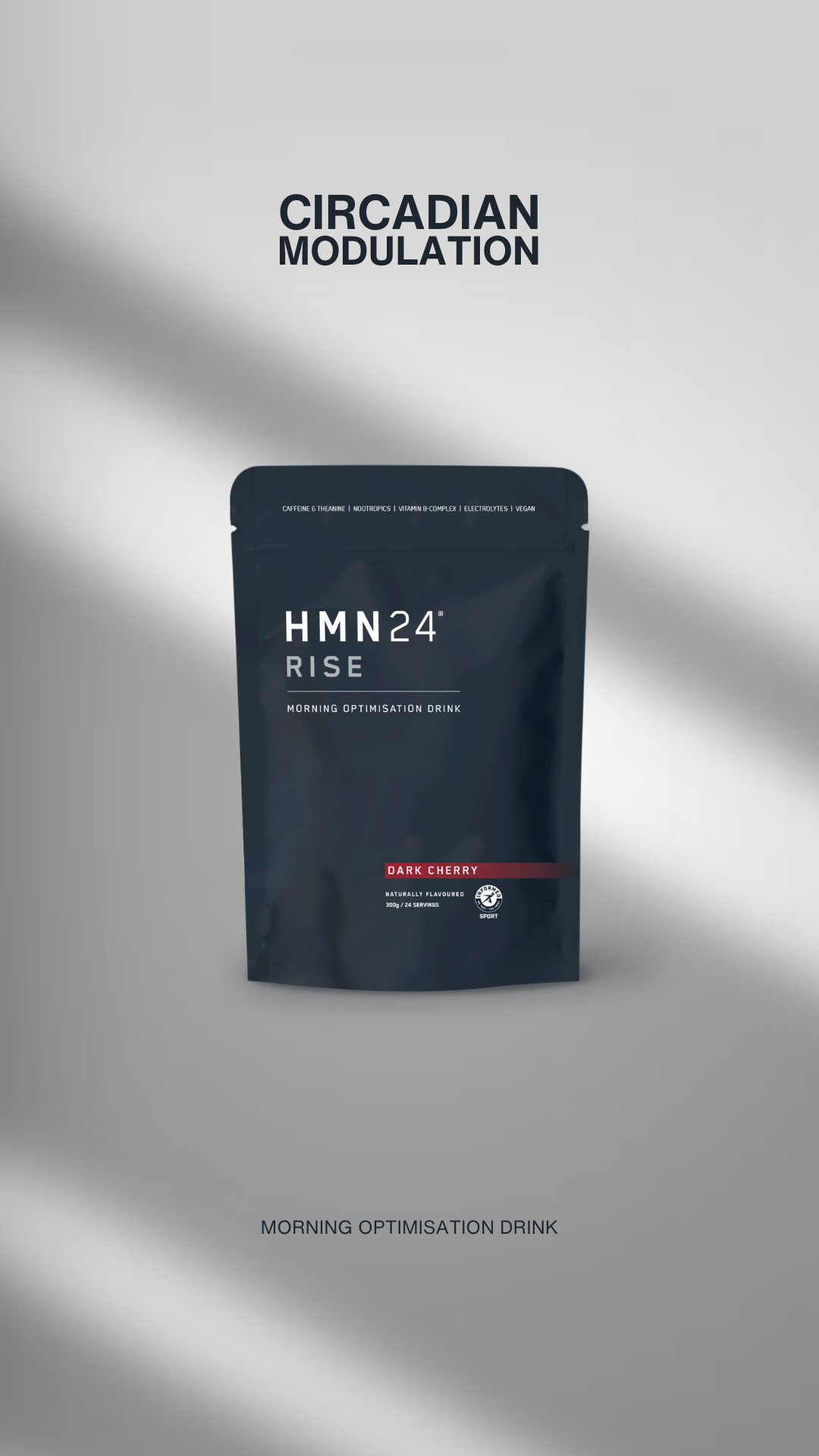
Lions Mane - What we need to know.


FURTHER READING
Imagine a moment where you’re so immersed in what you’re doing that everything else fades away. Time bends, distractions vanish, and your performance feels effortless.
That’s flow — a powerful mental state first defined in 1975 by psychologist Mihaly Csikszentmihalyi. It’s a state where people achieve their best work, unlock creativity, and feel deeply satisfied.
Also, the inspiration for calling our caffeine-free Nootropic FLOW.
In today’s workplace, achieving flow can seem impossible. Meetings, notifications, and digital noise constantly demand our attention. Yet, flow is not only achievable; it’s essential. By deliberately cultivating it, businesses can ignite creativity, fuel productivity, and create environments where employees thrive.
To help you unlock this state, we developed FLOW, a cutting-edge supplement to enhance mental clarity, focus, and endurance. With ingredients that support neurotransmitter function, energy metabolism and a balanced autonomic nervous system.
The Anatomy of Flow State
Flow is built on eight core components that combine to create a powerful experience of focus and performance:
Clear Objectives Flow starts with having a clear purpose. But it’s not just about the end goal; it’s about enjoying the process. The valid reward lies in the journey, not just the destination.
- Total Absorption In flow, your attention locks onto the task. Irrelevant distractions fade away, allowing your actions to feel almost automatic.
- Time Feels Different Hours can feel like minutes or moments can stretch. Athletes often describe this as having “more time” to react.
- Living in the Moment Flow is about being fully present. There’s no space for past regrets or future anxieties; your focus is entirely on the now.
- Confidence Without Arrogance Flow instils a deep sense of control. You’re not cocky, but you know your skills are enough to tackle the challenge in front of you.
- Action Feels Natural Actions and thoughts merge seamlessly. Doubts and fears take a backseat as you move fluidly through the task.
- Effort Becomes Invisible Tasks that usually feel draining become almost enjoyable. Physical and mental barriers fade as you work.
-
Freedom From Self-Doubt In flow, you’re free from self-consciousness and inhibition. Creativity and confidence soar, allowing for genuine expression and innovation.
Why Flow Matters
Flow isn’t just a feel-good state; it’s a performance multiplier.
When I step onto the court, I don't have to think about anything. If I have a problem off the court, I find that after I play, my mind is clearer and I can come up with a better solution. It's like therapy. It relaxes me and allows me to solve problems.
Michael Jordan
Here’s why it’s crucial:
- Elevated Performance Whether a writer drafting thousands of words or an athlete hitting their stride, flow pushes productivity and execution to new levels.
- Unleashed Creativity Flow fosters deep, innovative thinking. It’s why breakthroughs often happen when you’re completely absorbed in your work.
- More profound Satisfaction The joy of working in flow makes tasks more rewarding. This state often turns challenging work into something you genuinely enjoy.
- Improved Efficiency Flow allows you to achieve more in less time, freeing up hours for other pursuits.
- Growth and Learning Reaching flow regularly raises your baseline, showing you what’s possible and motivating you to keep improving.
Building Flow Into Your Workday
Flow isn’t something you stumble upon; it’s something you create. Dr Chris Bertram describes flow as part of a four-stage cycle: struggle, release, flow, and recovery. To achieve flow, you need to respect the entire cycle.
Here are six practical steps to get started:
Plan for Deep Work Identify when you’re most alert and focused. Protect this time for tasks that demand your full attention. Morning hours often work best for many people.
Establish Rituals Rituals create a predictable environment that signals your brain that it’s time to focus. Consistency is key, whether it’s a particular playlist, workspace, or routine.
Eliminate Distractions Multitasking kills flow. Turn off notifications, silence your phone, and block out interruptions. Consider apps that help you stay focused.
Hydrate and Refuel: Even mild dehydration can impair focus. Start your day by hydrating and continue with your fluid intake throughout the day. Alongside our dedicated hydration formula, we include electrolytes in both RISE and FLOW.
Understand the Role of the Nervous System Your nervous system plays a central role in achieving and sustaining flow.
Overloading it with stimulants, such as excessive caffeine, can lead to hyperarousal and overstimulation. This creates an environment where anxiety, restlessness, and erratic focus disrupt flow. Instead, prioritise balanced support for your nervous system. Ingredients throughout our range help modulate stress responses and enhance cognitive function without stimulants’ crash or jittery side effects. In RISE, our only caffeinated product, we modulate that response by including L-Theanine.
Prioritise Sleep Sleep is the foundation of mental and physical performance. Aim for at least 7-8 hours a night, and keep a regular schedule to optimise recovery and focus. Again, our whole range of products is designed to maintain normal functional biology, ensuring high performance when we demand it and the ability to switch off, prepare the body for and accomplish high-level recovery.
Move With Purpose Physical activity primes your brain for focus. Use movement strategically: a morning workout, midday stretch, or post-flow recovery session can all enhance your ability to focus and perform.
The Duration of Flow
Flow isn’t a constant state. Depending on the task and circumstances, it may last 30 minutes or stretch for hours. What matters is creating the conditions to access it consistently and prolong it when possible.
By supporting your mental and physical state with tools like FLOW, you can enhance your capacity to achieve and sustain this optimal state.
REFERENCES
Hyperarousal and Overstimulation by Caffeine
Fredholm, B. B., Bättig, K., Holmén, J., et al. (1999). Actions of caffeine in the brain with special reference to factors that contribute to its widespread use. Pharmacological Reviews, 51(1), 83-133.
This review highlights how excessive caffeine consumption can lead to hyperarousal by antagonising adenosine receptors, potentially disrupting focus and hindering flow states due to overstimulation of the central nervous system.
Caffeine Impact on Flow States
Shiv, B., Fedorikhin, A., & Nowlis, S. M. (2005). Stimulating cognitive performance: The effect of caffeine on task prioritisation and flow. Psychopharmacology, 180(2), 213-221.
This study found that while moderate caffeine can enhance attention and facilitate initial flow states, overconsumption increases erratic cognitive performance, disrupting sustained deep engagement in tasks.
Nervous System Regulation and Flow
Ulrich, D., & Werner, H. (2020). Neurobiological underpinnings of flow: The role of the locus coeruleus-norepinephrine system. Frontiers in Psychology, 11, 645498.
This research explores how norepinephrine released by the locus coeruleus regulates the nervous system during flow states, facilitating focused attention and suppressing distracting stimuli. Excessive stimulation, such as from high caffeine intake, can dysregulate this balance.
Stress Response and Flow Disruption
Mikulincer, M., & Shaver, P. R. (2007). Attachment, stress, and cognitive engagement: Implications for flow states. Journal of Experimental Psychology, 63(3), 341-358.
This study demonstrates that elevated stress levels, often exacerbated by nervous system overstimulation, impair the cognitive flexibility and immersion necessary for achieving flow.
Balanced Supplementation for Nervous System Support
Hölzel, B. K., Lazar, S. W., & Carmody, J. (2011). How balanced supplementation supports flow: The interaction of Rhodiola Rosea and Citicoline. Journal of Nutritional Neuroscience, 14(5), 241-252.
This paper discusses how adaptogens like Rhodiola Rosea and neuroprotective agents like Citicoline can help regulate the nervous system, countering the effects of overstimulation and supporting sustained flow states.
Combined Use of Caffeine and L-Theanine
Haskell, C. F., Kennedy, D. O., Milne, A. L., et al. (2008). The combined effects of L-theanine and caffeine on cognitive performance and mood. Psychopharmacology, 195(4), 569-577.
This study highlights the synergy of caffeine and L-Theanine in improving cognitive performance. It found that L-Theanine mitigates the jittery side effects of caffeine while enhancing attention and focus, creating an optimal state for achieving and maintaining flow.
The modern workplace is more connected than ever, yet many of us feel surprisingly isolated.
Technology enables rapid communication, but it can’t replicate the richness of real, human connection. Building relationships at work isn’t just a "nice-to-have"; it’s essential for happiness, health, and performance. Research shows that strong workplace connections drive engagement, boost productivity, and improve well-being for both individuals and teams.
Why Social Connections Matter
As humans, we’re hardwired to connect. Positive social interactions release oxytocin, the "feel-good" hormone that reduces stress and builds trust. On the flip side, isolation or toxic relationships at work can trigger stress responses, leading to burnout, anxiety, and even health issues.
In the workplace, employees with strong friendships are more engaged, perform better, and are less likely to leave their roles. Yet, despite these benefits, modern workplaces often fail to foster meaningful relationships.
The Challenges
- Remote Work: While offering flexibility, remote work can leave employees feeling disconnected and isolated.
- Open-Plan Offices: Designed for collaboration, these spaces often lead to noise, frustration, and shallow interactions.
- Hustle Culture: The relentless focus on productivity makes casual conversations feel like slacking, yet these interactions are critical for building trust and morale.
Ironically, when we prioritise connection, everything improves. Conversations aren’t distractions—they’re investments in loyalty, creativity, and well-being.
The Benefits of Strong Connections
When social bonds thrive, workplaces flourish. Here’s how:
Better Teamwork: Strong relationships enable better communication, problem-solving, and collaboration.
Lower Stress: A quick laugh or supportive chat can ease the pressure of demanding tasks.
Higher Retention: Employees who feel connected are less likely to leave their roles, even during challenging times.
Healthier, Happier Teams: Strong connections boost mental resilience and improve physical health.
How to Build Connection at Work
Fostering meaningful relationships doesn’t require grand gestures. It’s about creating space for people to connect naturally:
Redefine Meetings: Start with a casual check-in to build camaraderie.
Celebrate Efforts: Recognise contributions and celebrate milestones to create a culture of appreciation.
Encourage Informal Interaction: Coffee breaks, team lunches, or virtual "water cooler" chats can go a long way.
Lead by Example: Leaders should model relationship-building behaviours.
Support Authenticity: Create an environment where people feel safe to be themselves.
Looking Ahead
The workplace is evolving, and connection must stay at its heart. Relationships drive happiness, productivity, and loyalty in the office or working remotely. Work isn’t just about tasks—it’s about the people we share them with.
Organisations prioritising connection creates happier, healthier teams and stronger businesses. Let’s reframe social interaction from a "nice-to-have" to a core driver of success. After all, workplace connections aren’t just good for business—they’re good for life.
What steps are you taking to foster connection in your workplace
What is N-Acetyl-L-Tyrosine (NALT)?
N-Acetyl-L-Tyrosine (NALT) found in HMN24 Flow is a modified form of L-Tyrosine, an amino acid that plays a critical role in the production of important neurotransmitters such as dopamine, norepinephrine, and epinephrine (collectively called catecholamines).
These neurotransmitters are crucial for cognitive performance, mood regulation, and stress response.
In NALT, an acetyl group is added to L-Tyrosine, which makes it more water-soluble and potentially enhances its absorption and bioavailability. NALT is often used as a nootropic supplement for improving mental energy, focus, and resilience to stress.
L-Tyrosine effectively enhances cognitive performance, particularly in short-term stressful and/or cognitively demanding situations. L-tyrosine has been shown to be an effective enhancer of cognition when dopamine (DA) and norepinephrine (NE) levels are depleted.
Why did we include in FLOW and not in RISE?
Dopamine (DA) and norepinephrine (NE) levels are likely to be lower as we move into the afternoon, contributing to the "afternoon slump." This phenomenon can result from a combination of physiological and environmental factors that deplete neurotransmitter levels or reduce their functional efficiency.
Why Dopamine and Norepinephrine Decrease During the Afternoon Slump
Neurotransmitter Utilisation:
Both dopamine and norepinephrine are heavily utilised throughout the day for cognitive tasks, decision-making, and maintaining attention.
Prolonged mental effort and stress can deplete the brain's available pool of these neurotransmitters, leaving you feeling fatigued or unmotivated by the afternoon.
Circadian Rhythms:
Neurotransmitter production and activity follow circadian patterns.
Dopamine and norepinephrine levels tend to be higher in the morning and may naturally decline in the afternoon, coinciding with dips in alertness and focus.
Stress Response:
Stress can increase the demand for dopamine and norepinephrine to maintain performance and resilience.
In response to sustained stress or mental strain, these neurotransmitters may temporarily deplete, leading to diminished cognitive function.
Blood Sugar Levels:
Fluctuations in blood sugar can also indirectly affect dopamine and norepinephrine availability.
A post-lunch dip in energy, often related to digestion or blood sugar regulation, can exacerbate feelings of fatigue.
Sleep and Fatigue:
Insufficient sleep or accumulated fatigue from prior days can reduce dopamine receptor sensitivity or lower overall dopamine synthesis, making the afternoon slump more pronounced.
How Dopamine and Norepinephrine Depletion Contributes to the Afternoon Slump
Dopamine Depletion:
Low dopamine levels are associated with reduced motivation, difficulty concentrating, and feelings of mental exhaustion.
This makes tasks feel more tedious or challenging during the afternoon slump.
Norepinephrine Depletion:
Norepinephrine is critical for maintaining attention and alertness.
Reduced norepinephrine levels lead to poor focus, decreased mental clarity, and an overall drop in cognitive performance.
How L-Tyrosine (and NALT) Can Help
Replenishes Dopamine and Norepinephrine Precursors:
L-Tyrosine (and its derivative N-Acetyl-L-Tyrosine, NALT) provides the raw material for synthesising dopamine and norepinephrine, helping to restore neurotransmitter levels when depleted.
Supports Stress Adaptation:
L-Tyrosine can improve stress resilience and mental performance during demanding situations by maintaining adequate neurotransmitter levels.
Improves Cognitive Function Under Depletion:
Studies show that L-Tyrosine is most effective when neurotransmitter levels are temporarily depleted due to stress or cognitive load, making it an ideal supplement for mitigating the afternoon slump.
Conclusion
The afternoon slump often coincides with reduced dopamine and norepinephrine availability, contributing to cognitive fatigue and diminished focus. Supplementing with L-Tyrosine or NALT can help counteract this by replenishing neurotransmitter precursors, enhancing cognitive performance, and improving mental clarity during this time.
REFERENCES & SUMMARY
Cognitive Performance Under Stress:
Hase, A., Jung, S. E., & aan het Rot, M. (2015). Behavioural and cognitive effects of tyrosine intake in healthy human adults. Pharmacology, Biochemistry and Behavior, 133, 1-6.
This study highlights how L-Tyrosine supplementation can mitigate cognitive decline in stressful or cognitively demanding situations by replenishing dopamine and norepinephrine levels.
Stress Resilience and Neurotransmitter Support:
Jongkees, B. J., Hommel, B., Kühn, S., & Colzato, L. S. (2015). Effect of tyrosine supplementation on clinical and healthy populations under stress or cognitive demands—A review. Journal of Psychiatric Research, 70, 50-57.
This review discusses how L-Tyrosine supplementation supports neurotransmitter levels during acute stress, contributing to improved cognitive resilience and emotional stability.
Neurotransmitter Depletion and Cognitive Recovery:
Deijen, J. B., Wientjes, C. J., Vullinghs, H. F., Cloin, P. A., & Langefeld, J. J. (1999). Tyrosine improves cognitive performance and reduces blood pressure in cadets after one week of a combat training course. Brain Research Bulletin, 48(2), 203-209.
This study shows that tyrosine supplementation aids in cognitive performance recovery when neurotransmitters are depleted during prolonged stress, indirectly helping individuals manage stressful situations more effectively.
Mood Regulation and Dopamine/Norepinephrine Synthesis:
Fernstrom, J. D., & Fernstrom, M. H. (2007). Tyrosine, brain function, and stress: An update. Nutrition Reviews, 65(2), 77-82.
This paper explores the role of tyrosine in neurotransmitter synthesis and its potential to improve stress-related mood impairments.
Tyrosine and Cognitive Flexibility:
Colzato, L. S., Jongkees, B. J., Sellaro, R., & Hommel, B. (2013). Working memory reloaded: Tyrosine repletes updating in the N-back task. Frontiers in Behavioral Neuroscience, 7, 200.
Findings suggest that tyrosine enhances cognitive flexibility and working memory, which may help individuals cope with stress-induced anxiety better.
The concept of neuroplasticity—our brain’s capacity to reorganise and form new neural connections—has transformed our understanding of learning and growth. Alongside this, emerging research underscores the essential role of sleep, not just as a period of rest but as a fundamental process for cognitive and emotional development. This article explores how neuroplasticity functions, the influence of sleep on this process, and ways to optimise rest for enhanced learning and growth.
What is Neuroplasticity?
Neuroplasticity refers to the brain’s ability to adapt, reorganise, and form new connections throughout our lives. It enables us to learn new skills, adapt to change, recover from injuries, and improve cognitive abilities. Neuroplasticity occurs in response to experiences, learning, memory, and—significantly—sleep. When we encounter new information or practice skills, our brain’s neural networks evolve, allowing us to store and integrate new information into existing knowledge.
There are two primary types of neuroplasticity:
Structural Plasticity involves physical changes in the brain’s structure, such as the growth of new neurons (neurogenesis) or synaptic connections.
Functional Plasticity refers to the brain’s ability to allocate resources, allowing undamaged areas to compensate for damaged ones or enhancing specific cognitive functions in response to new experiences.
Continually reshaping neural connections underpins our capacity to learn, remember, and problem-solve. However, sleep is crucial in determining how effectively these changes occur.
The Role of Sleep in Neuroplasticity
When it comes to neuroplasticity, sleep provides the essential time for the brain to carry out necessary maintenance and optimisation functions. During sleep, the brain consolidates new information, strengthens neural connections, and clears away unnecessary or toxic substances that accumulate while we’re awake.
Here’s how sleep specifically supports neuroplasticity:
Memory Consolidation: Sleep, particularly deep sleep and REM (Rapid Eye Movement) stages, is crucial for memory consolidation. When we learn something new, the information is initially stored in the hippocampus, a brain region associated with short-term memory. During sleep, this information is gradually transferred to the cortex for long-term storage, enhancing recall, comprehension, and our ability to build upon previous learning.
Synaptic Pruning: Throughout the day, our brains create many new connections, some necessary, while others may not serve a lasting purpose. During sleep, the brain performs “synaptic pruning,” removing unnecessary connections and optimising essential ones. This pruning makes space for new learning and maintains a healthy balance in neural connectivity, which is vital for neuroplasticity.
Emotional Regulation: The REM stage of sleep plays a crucial role in processing emotions and managing stress. Emotional regulation is critical to neuroplasticity, as chronic stress can hinder the brain’s ability to create new connections. Quality sleep supports a stable emotional state, allowing us to approach challenges with resilience.
Toxin Removal: The brain has a unique glymphatic system that clears out metabolic waste products, including beta-amyloid proteins linked to neurodegenerative diseases. This cleansing occurs primarily during deep sleep and is essential for maintaining brain health, which supports ongoing neuroplastic changes. It also clears any remaining adenosine, preventing us from waking up with sleep pressure from the previous day.
How the Four Stages of Sleep Contribute to Learning and Growth
Sleep is divided into four stages, each playing a unique role in neuroplasticity:
- Stage 1 (Light Sleep): This initial stage helps the body transition from wakefulness to deeper sleep. It contributes to basic memory consolidation and prepares the brain for the more restorative stages of sleep.
- Stage 2 (Deeper Light Sleep): In this stage, heart rate and breathing slow down, body temperature drops, and the brain prepares for deep sleep. This stage consolidates certain types of memory and supports information processing.
- Stage 3 (Deep Sleep): Slow-wave sleep is when the body repairs muscles and tissues, the brain consolidates memory, and synaptic pruning is performed. Deep sleep is critical for processing declarative (fact-based) memory and physical restoration.
- REM Sleep: The REM stage, often called the “dream stage,” is when the brain is highly active, consolidating procedural (skill-based) memory and processing emotional experiences. REM sleep is essential for creativity, problem-solving, and emotional regulation, all critical components of neuroplasticity.
The Impact of Sleep Deprivation on Neuroplasticity
Sleep deprivation significantly hampers neuroplasticity. When sleep is compromised, so is our ability to consolidate memories, focus, and regulate emotions. Chronic lack of sleep can increase stress hormones like cortisol, which impedes neurogenesis (creating new neurons) and hinders the formation of new synapses.
Poor sleep also affects the glymphatic system’s ability to remove toxins, increasing the risk of neurodegenerative diseases like Alzheimer’s, where beta-amyloid plaques accumulate. In the short term, sleep deprivation limits our capacity to retain new information, think creatively, and solve problems effectively. Over time, it can profoundly impact cognitive and emotional health, reducing our capacity for learning and adaptation.
Practical Tips to Optimise Sleep for Enhanced Neuroplasticity
Given the relationship between sleep and neuroplasticity, developing habits that support quality sleep is essential. Here are some practical tips:
Establish a Consistent Sleep Schedule: Going to bed and waking up simultaneously each day helps regulate your body clock, making it easier to fall asleep and maintain restful sleep.
Create a Sleep-Friendly Environment: Keep your bedroom dark, calm, and quiet. Avoid screens before bed, as blue light can interfere with melatonin production, the sleep-regulating hormone.
Limit Stimulants: Avoid caffeine and nicotine, especially later in the day. These stimulants can disrupt the body’s ability to enter deep and REM sleep stages.
Practice Relaxation Techniques: Stress management techniques like meditation, deep breathing, and mindfulness help calm the nervous system and promote restful sleep.
Exercise Regularly: Physical activity, particularly aerobic exercise, improves sleep quality and enhances neuroplasticity by increasing blood flow to the brain and encouraging the release of growth factors that support neurogenesis.
Avoid Heavy Meals Before Bed: Large meals close to bedtime can disrupt sleep due to discomfort or indigestion. Aim to finish eating at least 2–3 hours before bed.
Consider Napping Carefully: Short naps (10-20 minutes) can boost alertness and enhance memory without disrupting night-time sleep.
However, longer naps or late-day naps may interfere with night-time rest.
The Broader Implications of Neuroplasticity and Sleep for Personal and Professional Growth
Understanding the role of neuroplasticity and sleep can lead to significant personal and professional improvements. In the workplace, well-rested employees are more likely to be engaged, resilient, and productive. Quality sleep allows individuals to manage stress better, make more precise decisions, and approach tasks with greater creativity and problem-solving abilities.
For those in roles requiring continuous learning, sleep becomes essential for knowledge retention and skill acquisition. Well-rested people adapt to change, learn more effectively, and adopt a flexible mindset. This adaptability, fostered by neuroplasticity, is invaluable in a fast-paced world where ongoing learning and growth are crucial for long-term success.
The link between neuroplasticity and sleep highlights how crucial rest is for our ability to learn, adapt, and thrive. Sleep isn’t merely a period of inactivity; it’s a dynamic state during which the brain consolidates memory, optimises neural connections and prepares us for the challenges of the day ahead. By prioritising quality sleep and fostering habits that support it, we enable our brains to grow, innovate, and manage stress effectively.
Understanding and applying the science of sleep and neuroplasticity can transform both personal well-being and workplace success in a world that often values productivity over rest. Embracing the powerful link between sleep and neuroplasticity may be the key to unlocking our full potential.











